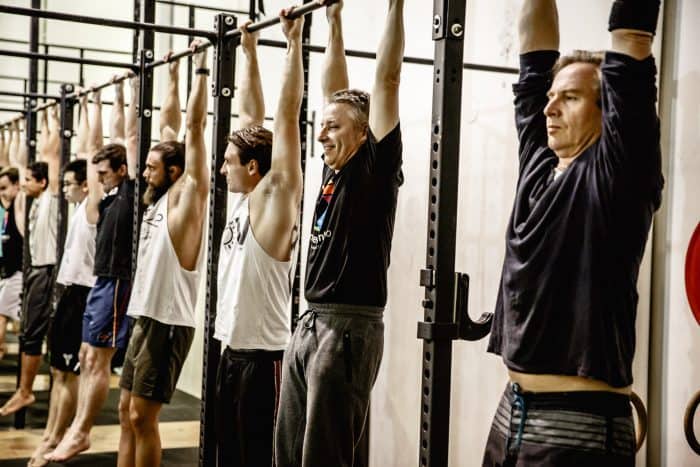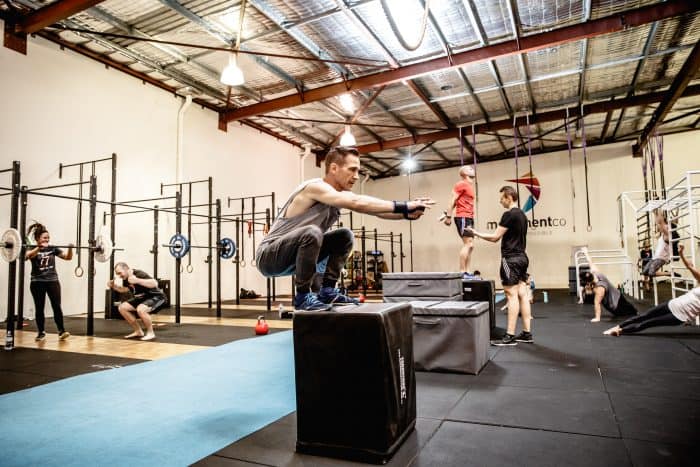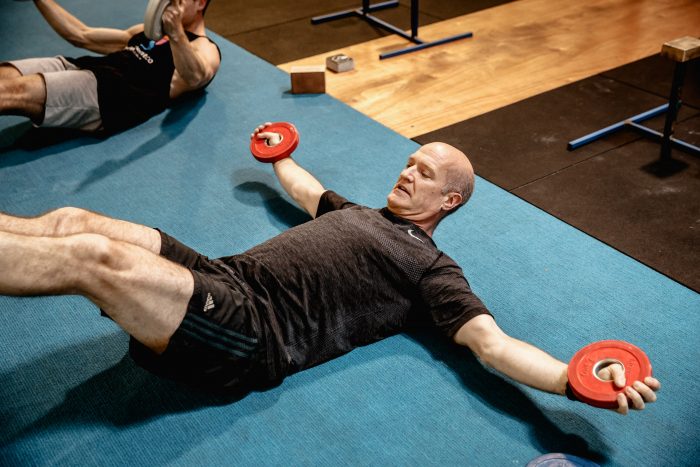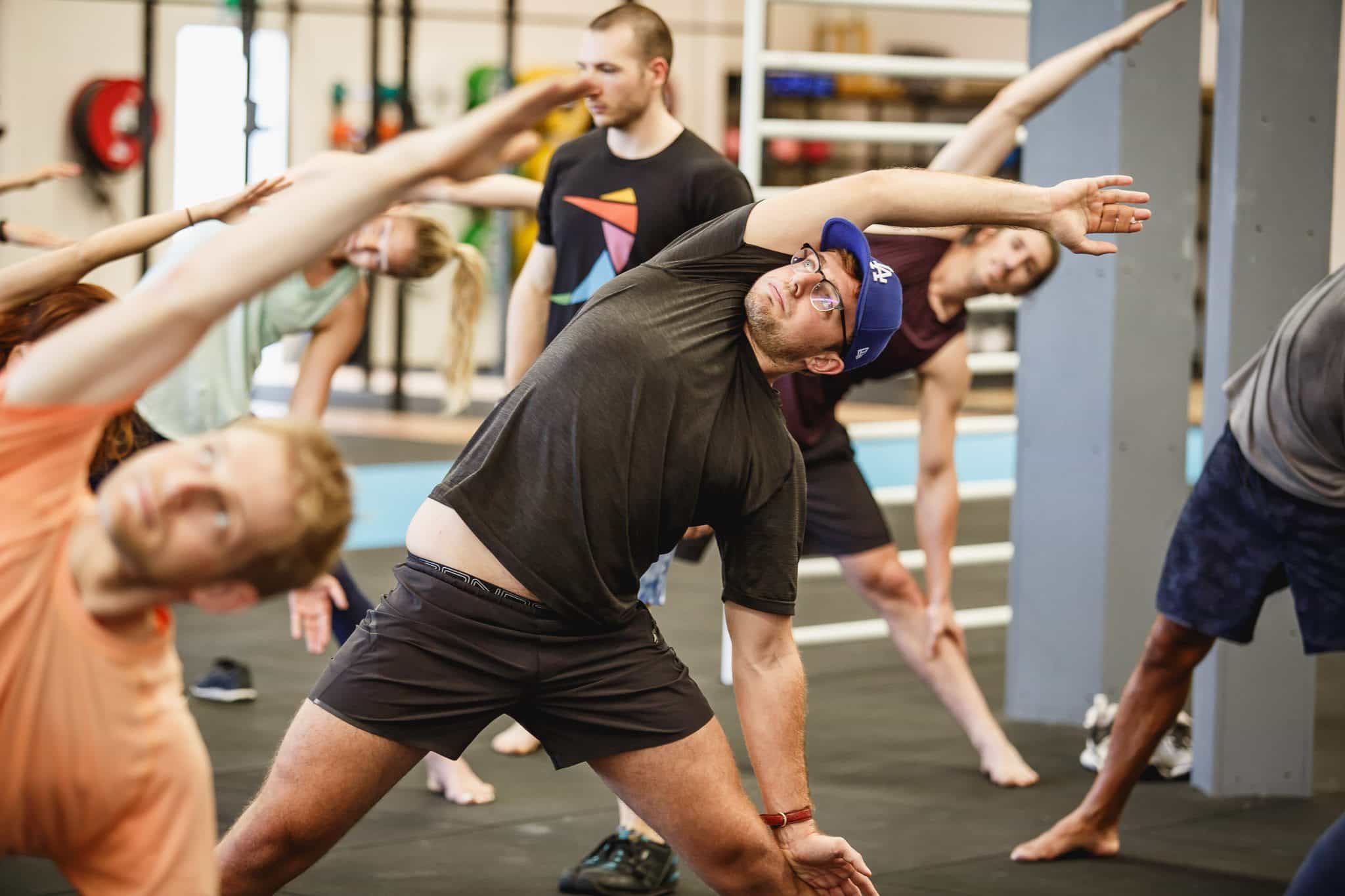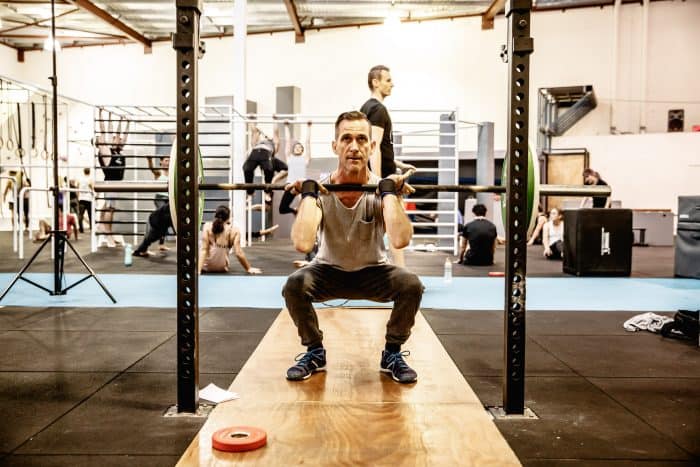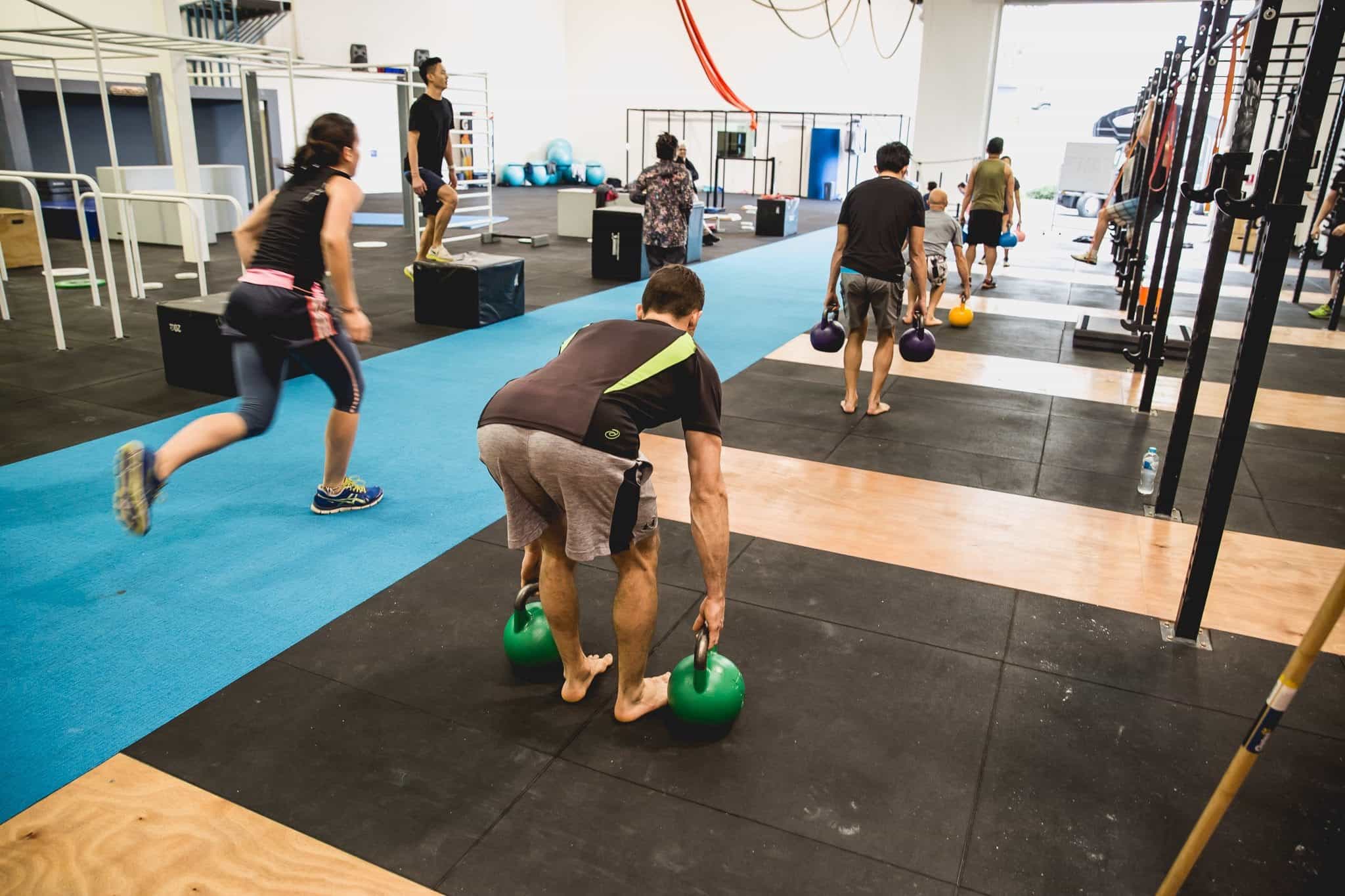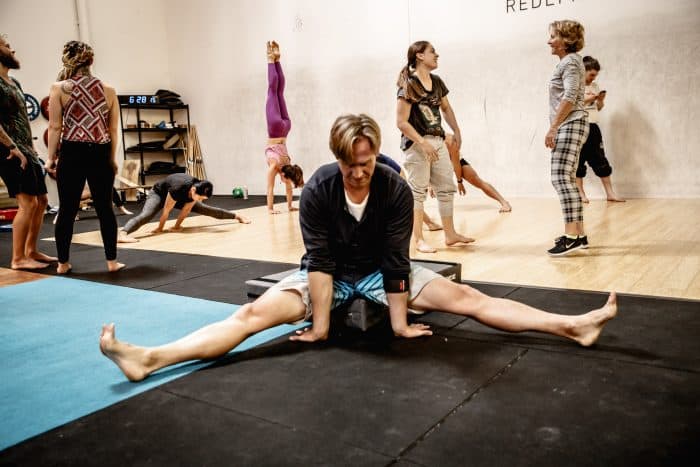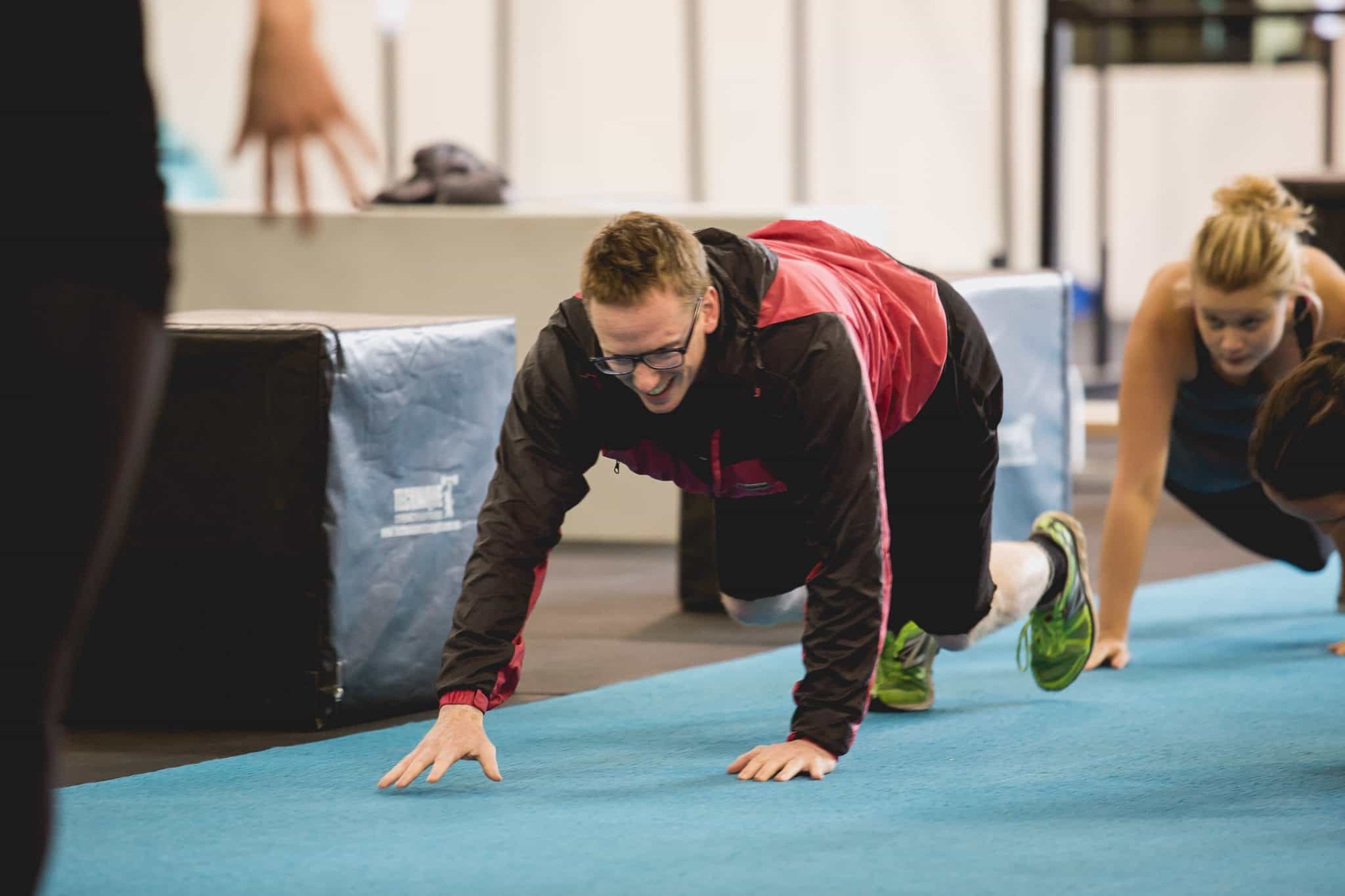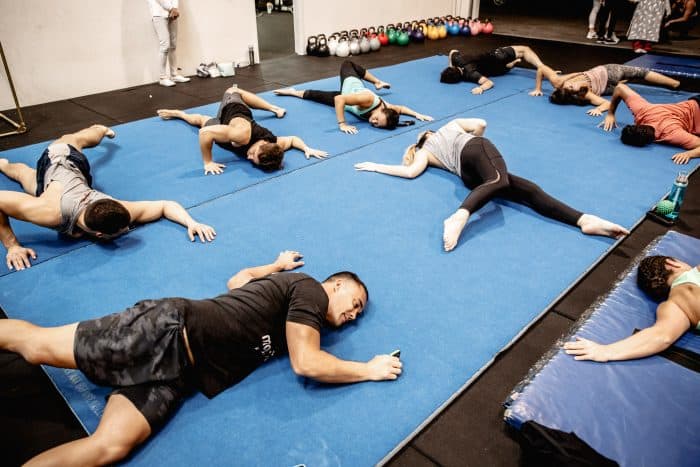8 reasons why sitting is causing you pain and what you can do to fix it.
Does this sound like a typical day for you?
You wake up from your comfy bed and then sit down to eat breakfast while scrolling through your phone or reading the paper.
Then you sit down in your car and head to work where you sit down again for 8+ hours only to get up occasionally before sitting back in your car and driving home to, you guessed it, sit down, have dinner, watch TV and then go to bed.
The average person spends 13+ hours per day sitting down.
But if you’re a busy professional or executive that can be even higher!
So what is the effect of all this sitting all day? And how are our bodies being affected by our lifestyle choices?
Your time is valuable so I am going to quickly explain the 8 biggest issues we see in our members who have high performing office jobs and the solutions we use in our classes to help ease their pain and improve their quality of life outside of work.
8 side effects of sitting
1. Back Pain
When you stand, your muscles and legs act like shock absorbers to distribute your weight through your whole body.
When you sit, however, your spine takes the majority of your weight, leading to compression in your lower back especially.
Poor posture such as slumping or slouching leads to even higher lower back compression, which can lead to premature degradation of your spine, a cause of serious back pain in many people.
SOLUTION: Hanging
We use hanging in almost all of our warmups because it decompresses your spine and helps lengthen your back muscles.
Make your back pain a thing of the past and start moving with our 7 Day FREE Trial
2. Knee pain
To keep knees healthy they need to move through their full range of motion by squatting and lunging, which helps to lubricate the joint and keep it healthy.
In day-to-day sedentary lifestyles this movement is minimal so the knee joint doesn’t get proper movement and begins to degenerate.
Pretty soon, simple things like tying your shoelaces or picking up the newspaper can be a cause of discomfort for people who don’t keep their knees in good condition.
SOLUTION: Squatting
You have probably tried squatting in the gym before and your knees just didn’t like it.
Our Bodyweight and Strength classes focus on getting the quality of your squats perfected and pain free before adding any weight.
Start building strong and healthy knees with our 7 Day FREE Trial
3. Weak core
When you sit, your core muscles don’t need to work very hard because your weight is supported through your spine.
But that’s not a good thing.
Our core muscles are really important.
Your core muscles act like a suit of armour to protect your spine from injury.
A weak core can lead to greater risk of injuries to your back when you bend over, twist or fall.
SOLUTION: Hollow Body
One of the most effective core exercises to improve your ability to brace through your torso and protect your spine is the hollow body position.
Bulletproof your spine by building a strong core. Start now and get 7 days of movement for FREE
4. Neck and shoulder pain
Poor posture can lead to chronic tension in your upper back, neck and shoulder muscles.
Most people today, especially those who work in office jobs, have what some people call “text neck”.
Text neck is a condition where constantly leaning over to work on your computer or scroll through your Facebook news feed puts a huge strain on your neck and upper back muscles, leading to tension headaches and neck pain.
SOLUTION: Stretching
Sitting down makes your muscles shorten and tighten.
It therefore makes sense to lengthen and stretch them in order to reduce tension.
Stretching is so important that we have 30 minute guided Flexibility sessions after EVERY class.
Rediscover what it is like to move freely with 7 days of flexibility classes for FREE
5. Weaker bones
Standing, walking, running and load bearing activities increase your bone density by putting positive stress on your bones.
This makes your bones adapt and get stronger, much the same way muscles do.
People who sit and drive a lot without doing a lot of walking or exercise will gradually lose bone density over decades.
Decreased bone density puts you at a higher risk of osteoporosis and bone breaks in later life when you fall over.
SOLUTION: Strength Training
In order to maintain bone density over time you need to continually load your muscles and bones to keep then growing and renewing bone calcium.
This can be either through weightlifting of bodyweight training.
6. Inactive Glutes
Another thing that happens when we sit a lot is that our knees get used to being close together.
When you sit though, your butt muscles don’t have to do much so they go to sleep.
Especially the side butt muscle, which is responsibly for turning your hip out and pulling your knees apart.
Weakness and inability to properly activate your glutes makes it harder to maintain proper knee alignment when you walk, run, squat or move.
This can lead to knee injuries when one side of your knee is loaded more than the other.
SOLUTION: Deadlifts
You don’t have to lift heavy weights and feel like you’re going to injure your back in order to keep your legs strong.
The shopping bag style deadlift with a kettlebell or dumbbell in each hand is a beginner friendly option and can be done with light weights and progressed easily.
Strengthen your legs, core and upper body with 7 days of FREE strength and bodyweight classes
7. Hip pain and difficulty squatting
Two of the most important components of a good squat are hip and ankle mobility.
Sitting makes your hip muscles shorten.
Over time they get used to this and tighten up.
Short and tight hip flexors make it harder to push your knees out and open your hips to get into a deep squat the way our bodies were designed to.
Combine this with restricted ankles due to the poor office shoes most people wear every day and you get a recipe for poor squat mechanics.
This will impact the way you pick things up off the ground, how you tie your shoes and many other simple daily activities.
SOLUTION: Mobility
In our Flexibility classes we do a lot of hip mobility work because of all the sitting people do in their jobs.
The straddle sit and straddle up are two of the most popular hip mobility drills we do.
8. Fat loss inhibited
So far we have only touched on the muscle, bone and joint related conditions that are associated with sitting down all day.
But what about the stuff happening inside your body?
One of the biggest effects is on your digestive system.
Sitting down slows down digestion and slows your metabolism because the body doesn’t think you need much energy to survive when you’re sedentary.
A slower metabolism makes it harder to lose fat because your body becomes more efficient at storing fat.
SOLUTION: Movement
This one is simple.
Moving any chance you get is the best way to counteract all the inactivity and sitting you do.
It might be stretching, lifting weights, walking or doing a group class but just moving is the first step to undoing all of the above issues.
Stop sitting and start moving with our 7 Day FREE Trial
What do we recommend?
Simple: come and try a class!
We believe that the secret to long term results and enjoyment of exercise and fitness is to find something that you enjoy doing.
We have members in their 70’s learning to handstand, people in their 50’s and 60’s rediscovering what it feels like to be strong and flexible and members in their 20’s, 30’s and 40’s becoming incredible role models for their friends and families.
Movement is all about becoming strong, mobile and active whilst enjoying yourself at the same time.
You won’t find many gyms in Perth where a 20-year-old university student will be training alongside an 80-year-old grandfather on the same journey to learn incredible new movements.
And that is why it is so powerful.
Movement knows no age limits.
Even more, our coach lead class environment and welcoming community makes training become a rewarding and fulfilling experience for people who sit down in an office environment all day.
Being able to have somewhere you can go before or after work and be told exactly what to do by experience coaches whilst surrounded by incredible individuals is such a powerful way to overcome our sedentary lifestyles and learn to truly move.
Discover how movement can change your life for the better with our 7 Day FREE Trial
Start your life changing FREE 7 Days of Movement
Jacob Moffitt
Founder and Strength Coach


